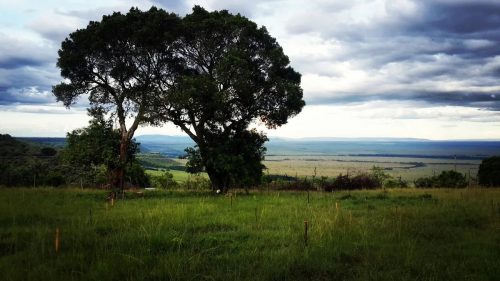
'Designing a food forest for a luxury safari lodge on the edge of the Maasai Mara - ja right! But wait, she’s serious. Okay, I believe her. How do I stop myself jumping around in excitement? Not a great first impression that would make. I’ve got it, I’ll clench my teeth and wrangle my hands together under the table so she doesn't notice.'
Whether or not Nicky noticed, two years after that dinner chat I found myself strapped into the smallest plane that I’d trust my life with, next stop: Angama Mara.
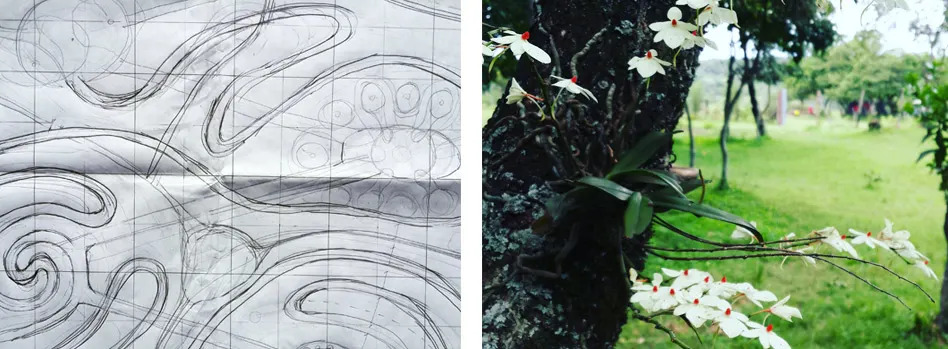
Fending a garden off from pests usually consists of the odd scarecrow or some temporary fencing. At any given point standing in Angama Mara’s shamba one can spot at least three species larger than humans including a unicorn (okay – a one-horned waterbuck). Nicky’s brief to design a magical garden ruled out high voltage electric fencing which any local farmer will tell you is the ‘only solution’. This shamba is less than 100m from the unfenced mighty Maasai Mara, for heaven’s sake.
So I visited a nearby manyatta (Maasai homestead) to learn about their defence solutions. ‘Could I see your shamba?’ I asked the mamas. ‘No’, they giggled, they didn't see the point of growing one. The eland would hurdle the fence and graze all their produce. Amused by the gobsmacked look on my face, John, Angama’s Maasai naturalist, told me about the wait-a-bit thorn tree which keeps out most animals. But the best defence in his opinion is the smell of humans. Building manyattas on opposite sides of the shamba would be a good starting strategy.
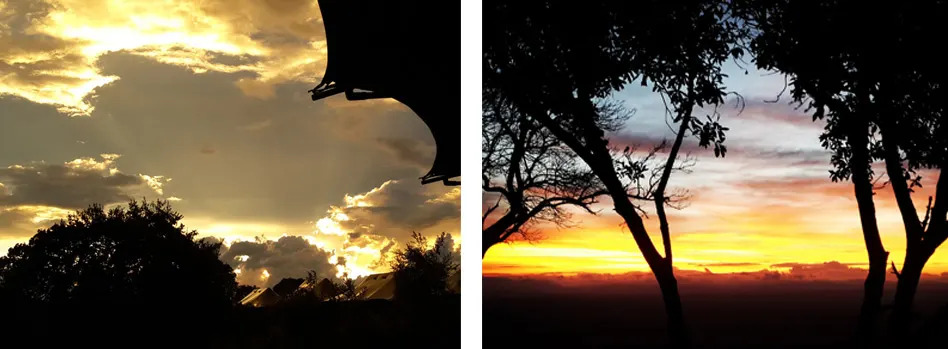
My visit fell in the middle of the ‘long rains’ season. Warm sunny days were washed down by late afternoon showers that blew in from across the Mara, creating remarkable sunsets. Early birds and beaming butterflies decorated my morning walk to the site, where I’d notice the way the water had visited the land. I say visited as little of it had been captured. The neighbouring rain forests along the riverbeds are the kinds in storybooks: orchids sprout from fallen branches, and the scent of the fertile earth suggests that it’s surely delicious even to humans. We have to recreate this in our shamba.
Channelling the water that fell onto and adjacent to the 60 x 60m site dictated the first ordering principle. Implementing a series of pools and swales (water furrows) would create a microclimate, reserving water for the harsh dry spells. Swales follow the contour lines and, in this case, divide the shamba up into 5 sections.
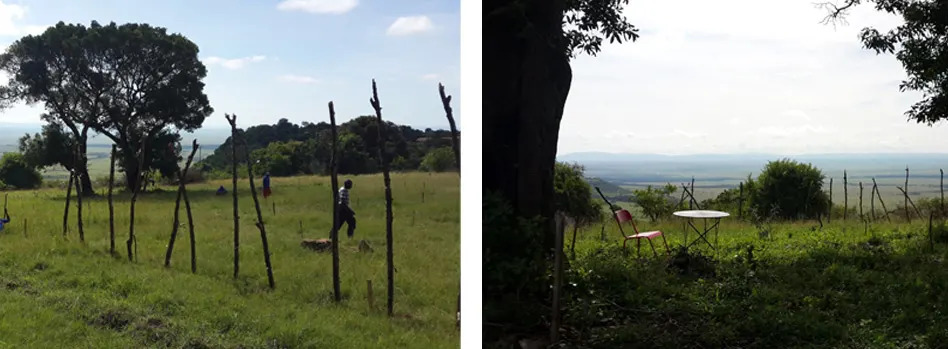
As a child, I remember being enchanted by hidden pathways and secret openings. To offer the lodge guests mystery and surprise, I felt that the method of gently meandering should include choices. A visitor could take the direct path linking the 5 zones in the most efficient manner, or they could embark on a mildly chaotic journey of mazes and labyrinths. Hard-to-reach corners will offer explorers a sanctuary, a place to feast upon whatever is growing and edible or simply laze among fragrant herbs observing the display of wonder and geometry of the Kenyan wild flowers growing amongst the kitchen garden produce.
Watch this blog as our shamba starts to take shape – there is heaps to follow.
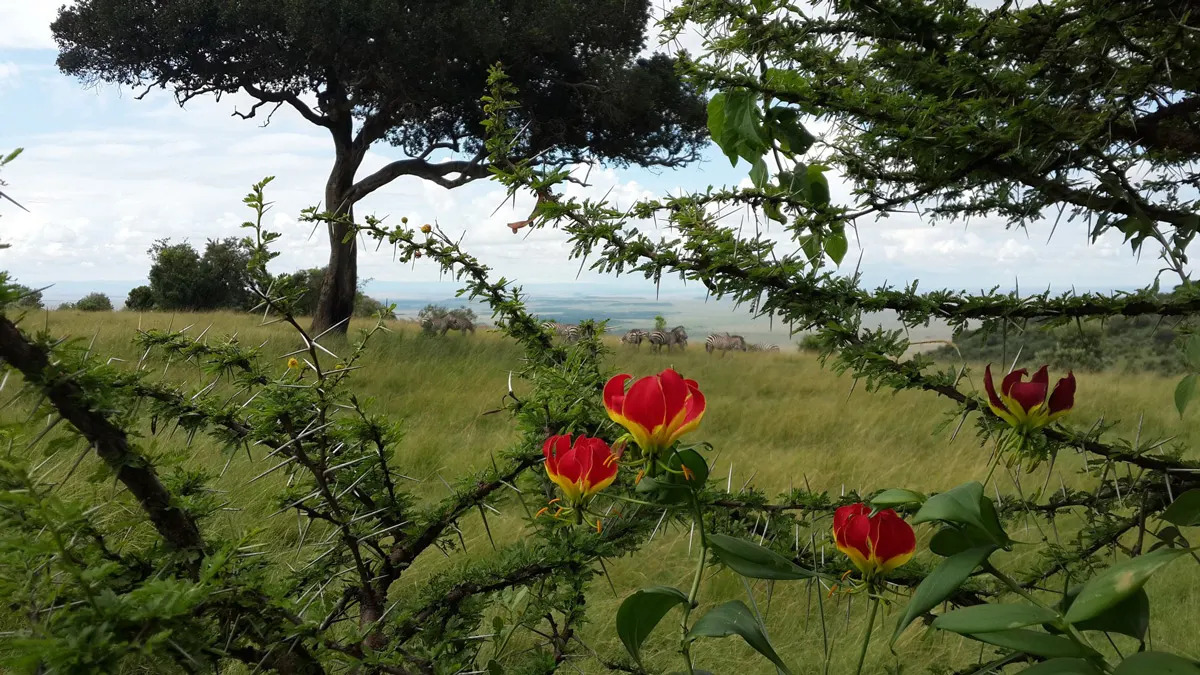
Shamba is Swahili for field, farm, patch, garden, or plantation, and the one at Angama Mara will be a perfect hybrid of them all. Our shamba is inspired by the magnificent gardens of Babylonstoren in the Cape wine lands of South Africa — just a little more chaotic. And if you haven’t seen the delightful movie A Little Chaos, you have a treat in store.
Filed under: Inside Angama
Subscribe for Weekly Stories
Comments (2):
28 May 2017
Thanks so much Bunny Ian is back in the garden this week to spin some more magic ... and write another story
27 May 2017
Ian - we saw your lovely shamba in February and it was already looking wonderful. We can't wait to go back and see the magic you have created when we return in March 2018. You r Shamba is something truly special. Congratulations!
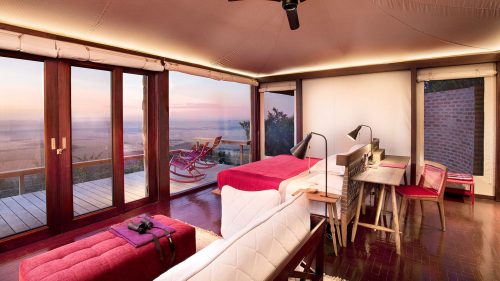
Tented Suites